InAsia
Insights and Analysis
A New Chapter for a Storied Books Program
February 21, 2024

A camel transports crates of books from Books for Asia in 1950s Pakistan. (Photo: The Asia Foundation)
This year, The Asia Foundation’s longest-running program, Books for Asia, has taken a momentous step as it completes its metamorphosis into the Let’s Read children’s storybook initiative. Launched at the time of the Foundation’s birth in 1954, Books for Asia has been a centerpiece of Foundation programming for seven decades as it donated millions of much-needed books, magazines, and professional journals to schools, universities, and libraries across Asia.
As this new chapter begins, the renamed Let’s Read program is saying goodbye to the print-distribution model, with its massive warehouses and international shipments of donated publications, and embracing the digital era, with a new focus on original works in local languages for young people, distributed free of restrictive copyright licensing on our Let’s Read online platform.
After 70 years of Books for Asia, the need for information is as strong as ever, but now, universities and libraries have online access to vast collections that previous generations could only have dreamed of. The business of publishing has also changed, as electronic distribution has reduced the number of surplus publications available for donation. And the environmental costs of shipping physical books over long distances have become difficult to justify.
Yet, the importance of widespread literacy for inclusive development has never been greater, and the fundamental skills and habits of reading are best acquired in childhood, through books and stories that speak to children’s own experience in the voices of their mother tongues.
The Foundation’s Let’s Read program has already made a name for itself with book-creation projects that recruit local authors, illustrators, and editors to create new storybooks for children that support early literacy and build the love and habit of reading. These locally created storybooks are readily available on Let’s Read’s online platform, where they can often be downloaded in several local languages. They can also be locally printed at low cost, and many have been introduced to the public at popular story-time events that encourage reading in families, schools, and communities.
As Let’s Read becomes our new flagship, we offer a chronicle of the seven-decade history of Books for Asia and the Foundation’s impact on access to information in Asia and the Pacific.

Packing books for shipping at Books for Asia’s San Francisco Warehouse. In 1959, shipments reach a milestone of one million books. (Photos: The Asia Foundation)
The 1950s. In 1954, The Asia Foundation is born with the stated purpose of supporting peace, independence, personal liberty, and social progress in Asia. From the beginning, the Foundation emphasizes education, with international exchange programs and the new Books for Asian Students initiative, soon rechristened Books for Asia. The first shipments of donated publications are distributed to schools in the Philippines and Japan.
Donations in this first decade also include precious newsprint for Asian publishers, programs for indigenous writers, and, in Sri Lanka, a Volkswagen van converted to a mobile library. By the end of the decade, Books for Asia has donated more than one million books to schools and libraries.
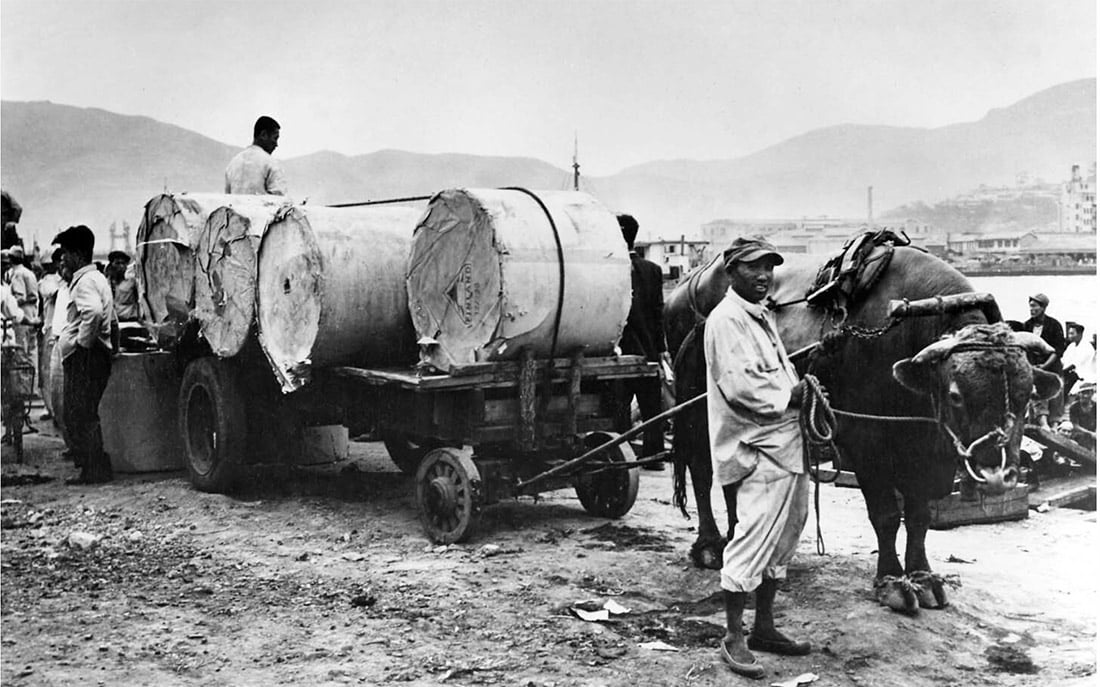
The 1950s: Bulls hauling newsprint for school textbooks to Korean printers (Photo: The Asia Foundation)
The 1960s. The Foundation continues to provide support for Asian academic institutions, including the professionalization of elementary and secondary education. In Taiwan, the Foundations supports elementary school science education with mobile science units for all elementary grades. In Vietnam, the Foundation helps universities develop their libraries and improve the academic qualifications of faculty members. By the Foundation’s fifteenth year, more than 8 million books and journals have been donated to 828 schools and libraries in Asia, and 350 post-secondary schools and universities have received significant development support.

A container ship carrying donated books passes through the Golden Gate. (Photo: The Asia Foundation)
The 1970s. In 1970, The Asia Foundation conducts a thorough review of its programs and identifies education as an Asia-wide focus. By the mid-1970s, most of the Foundation’s grants address education issues, particularly in the sciences and social sciences. In 1972, The Asia Foundation and the Peace Corps assist the Malaysian Ministry of Education in modernizing its primary -school math and science curricula.

Books for Asia is part of The Asia Foundation’s commitment to education. In 1972, the Foundation and the Peace Corps support a special project of the Malaysian Ministry of Education to modernize the math and science curriculum in primary schools. (Photo: The Asia Foundation)
The 1980s. In a push for greater literacy in Pakistan, The Asia Foundation begins a three-year project to provide “box libraries,” containing a selection of basic books in Urdu and other local languages, to villages in each of the 4,200 Union Councils of rural Pakistan, including tribal areas. The Box Library Project eventually delivers a million books to Pakistani villagers. In 1984, a special report by the U.S. Library of Congress cites Books for Asia as a “model” for its size and effectiveness in distributing educational materials to schools and libraries in Asia.

Box Libraries in Pakistan: children reading on the Alif Laila Book Bus in Lahore in 1985. (Photo: The Asia Foundation)
The 1990s–2000s. By the early 2000s, more than 38 million books have been donated. This includes nearly half a million in Cambodia, where, in 2000, the Cambodian organization Kampuchean Action for Primary Education launches a scholarship program, in collaboration with The Asia Foundation, to help rural girls bridge the gap between primary and secondary school.
Children’s storybooks are now becoming increasingly popular with recipient institutions. Even though the donated books are in English, storybooks, textbooks, and reference books for children become the most-requested books from Books for Asia.

A water-borne “library boat” in Bangladesh. (Photo: The Asia Foundation)
The 2010s. As the aughts give way to the teens, Books for Asia continues to seek ways to increase access to information, including getting more books to kids. The multicountry campaign Choose a Book, Change a Life raises awareness and puts books in the hands of thousands of children across the region. Books for Asia also works with local organizations to serve remote locations, delivering books by boat in Bangladesh and the Indonesian archipelago, and creating mobile libraries in Pakistan, Laos, and Timor-Leste. The program is recognized as a Program Best Practice Honoree at the U.S. Library of Congress Literacy Awards.
In March 2017, Let’s Read debuts its online library with the creation of four original storybooks by a group of writers and illustrators in Cambodia and new book translations for the S’gaw Karen community in northern Thailand.
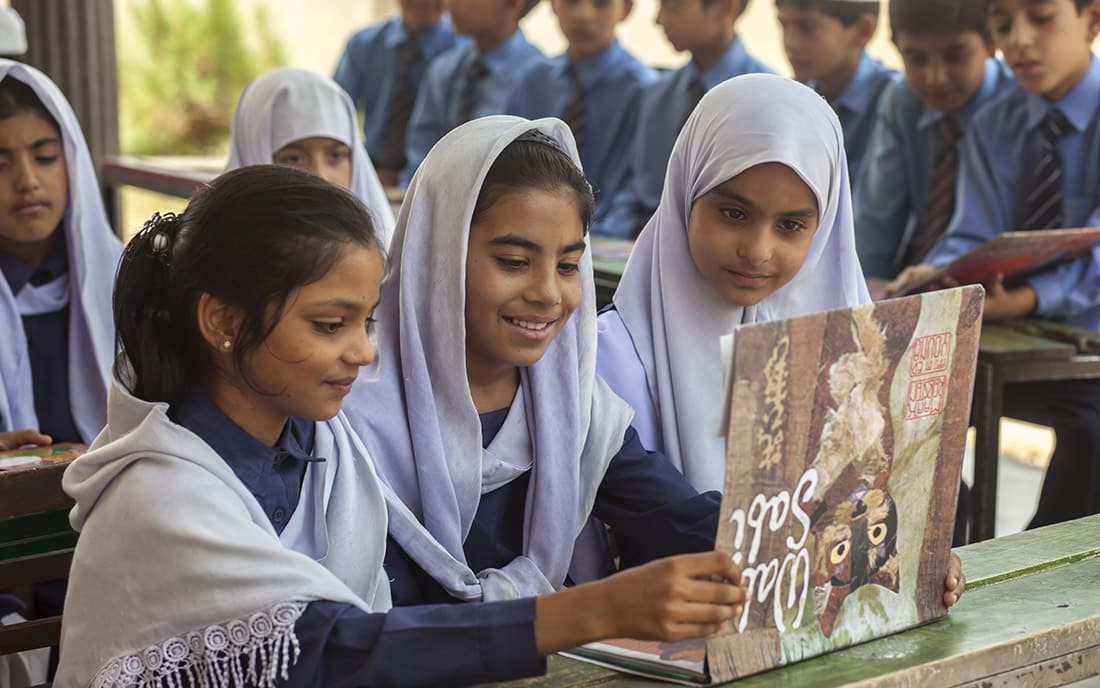
Girls reading a book from the Books on Wheels initiative in Pakistan in 2012. (Photo: Sara Farid / The Asia Foundation)
The 2020s. When Covid-19 closes schools around the globe, tens of thousands of Asia-Pacific students, teachers, and families turn to the Let’s Read digital library for books and reading activities. Meanwhile, donations of books and other printed materials to the legacy Books for Asia program are dwindling amidst changes in the publishing business. With its last deliveries—to the Philippines in 2023—Books for Asia has shipped a total of 52,850,813 publisher-donated books from the United States to Asia and the Pacific.
By the start of 2024, books on the Let’s Read platform have been read more than 15 million times. The library now includes more than 10,500 books in 60 languages. Working with local writers and illustrators, Let’s Read has created more than 600 original storybooks in the languages that children speak in their homes and with characters that look like them and share their culture. A total of 1.9 million copies of Let’s Read books have also been printed for occasions such as public read-aloud events and distribution to the most remote destinations.
After 70 years, the books program is alive and well.
Visit the Let’s Read digital library at www.LetsReadAsia.org or find us on the Apple App Store or Google Play.
Kyle Barker is the director of The Asia Foundation’s Let’s Read. He can be reached at [email protected]. the views and opinions expressed here are those of the author, not those of The Asia Foundation.
1 Comment
About our blog, InAsia
InAsia is posted and distributed every other Wednesday evening, Pacific Time. If you have any questions, please send an email to [email protected].
Contact
For questions about InAsia, or for our cross-post and re-use policy, please send an email to [email protected].The Asia Foundation
465 California St., 9th Floor
San Francisco, CA 94104
The Latest Across Asia
News
April 25, 2024
Program Snapshot
April 18, 2024
News
April 17, 2024

2024 Lotus Leadership Awards
The Lotus Leadership Awards recognize contributions towards gender equality in Asia and the Pacific

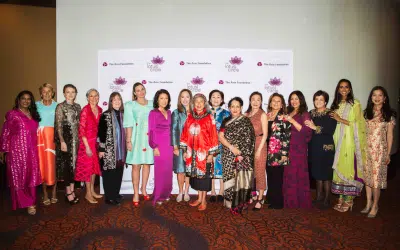
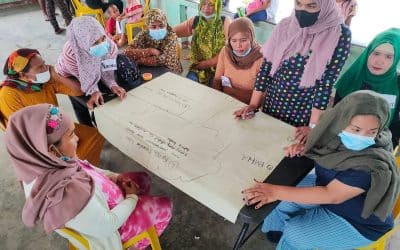
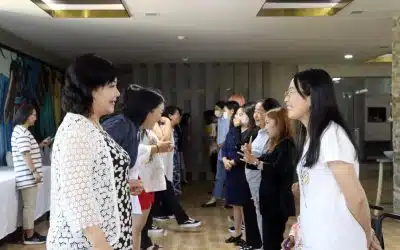



So glad to hear that the books program has moved to digital. Exactly what is needed in the less developed areas of Asia today. I was directly involved in the North Korea program which was very much welcomed. Thousands of TAF-donated books line the shelves of libraries in Pyongyang and beyond. Since Internet access is blocked in North Korea, I wonder if there is a way the new program can still be offered there. I would be happy to help think about that challenge.